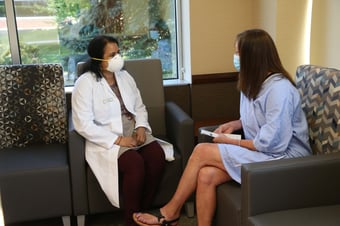 Iowa Radiology joins the American Medical Association, the American College of Obstetricians and Gynecologists, the American College of Radiology, the American Cancer Society, the American College of Family Physicians, and the National Cancer Institute in recommending annual mammograms for women aged 40 and over. Although the U.S. Preventive Services Task Force (USPSTF) challenged those recommendations in 2009, citing research that suggested screening mammograms were less effective for women in their 40s, critics point out that their research is outdated, as it was based on film, rather than digital, mammography, and it did not account for developments in treatment that steadily lead to higher survival rates.
Iowa Radiology joins the American Medical Association, the American College of Obstetricians and Gynecologists, the American College of Radiology, the American Cancer Society, the American College of Family Physicians, and the National Cancer Institute in recommending annual mammograms for women aged 40 and over. Although the U.S. Preventive Services Task Force (USPSTF) challenged those recommendations in 2009, citing research that suggested screening mammograms were less effective for women in their 40s, critics point out that their research is outdated, as it was based on film, rather than digital, mammography, and it did not account for developments in treatment that steadily lead to higher survival rates.
Although one screening mammogram per year beginning at age 40 is the standard recommendation, individual women should discuss their particular breast cancer screening needs with their health care providers. Several factors can influence the type of screening a woman should receive and when she should receive it.
Factors that Influence the Type of Mammogram You Should Get
Breast Cancer Risk
The imaging recommendations of a particular woman depend partially on her lifetime breast cancer risk. At Iowa Radiology, we use the Tyrer-Cuzick model, which considers a woman’s age, BMI, family history, menstrual and childbirth history, and use of hormone replacement therapy to calculate her lifetime breast cancer risk. For women whose risk is calculated to be at least 20%, the American Cancer Society recommends that screening begin at age 30 and include annual breast MRI,[1] which has proven a useful supplement to mammography in evaluating women at high risk of developing breast cancer.[2]
Dense Breasts
Dense breast tissue – that which is more glandular and fibrous than fatty – is more difficult to evaluate on a mammogram than fatty tissue. Dense tissue shows up as white on a mammogram. Tumors also appear white, making them difficult to detect amid dense tissue. Additionally, women with dense breast have a higher risk of developing breast cancer. For these reasons, the question of whether to recommend additional imaging, such as MRI or ultrasound, is currently being studied.[3] If you have been told that you have dense breasts, get your doctor’s advice on what type of breast cancer screening would be optimal for you.
Breast Implants
Breast implants can also make mammograms difficult to read. The X-rays used in mammography cannot sufficiently penetrate silicone or saline implants to image tissue that is over or under them. For this reason, for women who have breast implants, two additional views are typically taken of each breast in order to show tissue that would be hidden by the implants in the standard views.[4] Breast implants also carry a risk of rupture, which can sometimes be found with (and is rarely caused by) mammography. If you have breast implants, discuss your imaging options with your doctor. Breast MRI may be recommended in addition to your annual mammogram to provide clearer views and better detect rupture.[5]
Pregnancy
Although mammography is thought to pose very little risk to a developing fetus,[6] screening mammograms are not typically performed during pregnancy. Always inform your radiologist prior to any imaging procedures if you think there is a chance you may be pregnant. If you know you are pregnant, speak to your doctor about what breast cancer screening schedule and methods are best for you. Breast ultrasound is sometimes recommended for pregnant women or other women who should not be exposed to X-rays or undergo MRI.[7]
Download our free ebook to learn more about mammograms and find out what you should know before your next one.
The information contained in the Iowa Radiology website is presented as public service information only. It is not intended to be nor is it a substitute for professional medical advice. You should always seek the advice of your physician or other qualified healthcare provider if you think you may have a medical problem before starting any new treatment, or if you have any questions regarding your medical condition.
Iowa Radiology occasionally supplies links to other web sites as a service to its readers and is not in any way responsible for information provided by other organizations.
Sources
[1]http://www.cancer.org/cancer/breastcancer/moreinformation/breastcancerearlydetection/breast-cancer-early-detection-acs-recs
[2]http://www.radiologyinfo.org/en/info.cfm?pg=breastmr - part_nine
[3]http://ww5.komen.org/uploadedfiles/content_binaries/breast density komeed084200.pdf
[4]http://www.cancer.org/treatment/understandingyourdiagnosis/examsandtestdescriptions/mammogramsandotherbreastimagingprocedures/mammograms-and-other-breast-imaging-procedures-special-mammo-sit
[5]http://www.radiologyinfo.org/en/info.cfm?pg=breastmr - part_nine
[6]http://www.cancer.org/treatment/understandingyourdiagnosis/examsandtestdescriptions/mammogramsandotherbreastimagingprocedures/mammograms-and-other-breast-imaging-procedures-mamm-radiation
[7]http://www.radiologyinfo.org/en/info.cfm?pg=screening-breast


